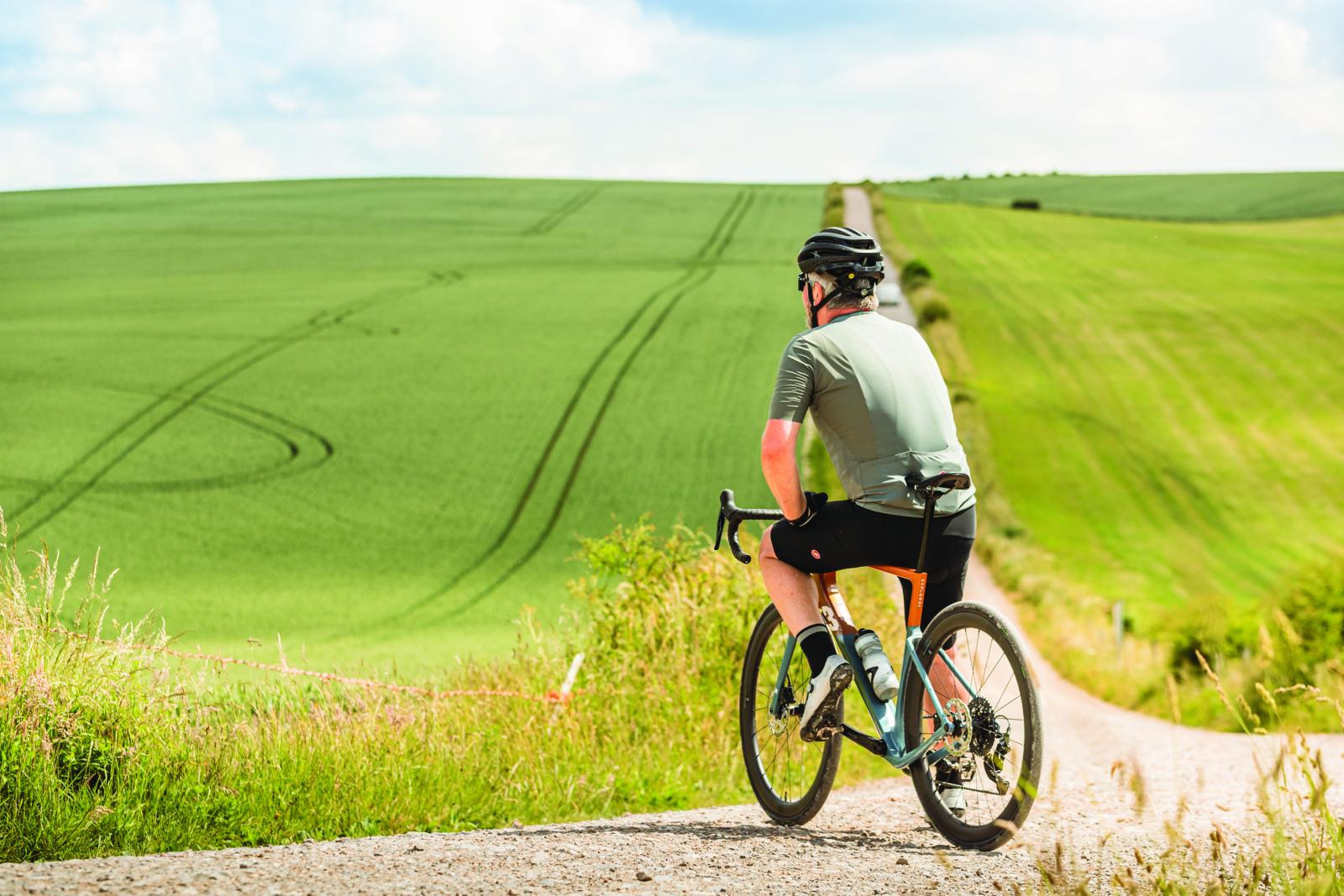We were impressed with the original Lector, which had all the benefits of typical German bikes in terms of stiffness and light weight, but with decent comfort levels, which aren’t always apparent. For 2013, Ghost have taken the Lector back to the drawing board. It’s now ready for Di2, and includes a chainstay mount for electronic batteries.
Frame & equipment: Light frame with 105 value
The frame’s shaping has evolved, with a tapered head tube and a curvier top tube and multishaped down tube.
Geometry, however, has stayed the same – there was nothing wrong with the original layout, so that makes sense. It’s based on parallel 73.5 angles, but a little more trail in the fork pushes the wheelbase over a metre, and a mid-height 185mm head tube means a bike with racing potential but a little more comfort in the ride position.
The all-in weight is just 100g or so over the 8kg (17.6lb) mark, putting the Lector among the lightest of our Bike of the Year test bikes; that it’s also one of the cheaper models makes it all the more impressive. It’s equipped with Shimano’s 105 groupset too, which only adds to the value promised.
Easton supply their base model wheels, which are very light for budget items. The hubs are simple but easy to maintain, and the tension in the spoking is fairly good. We could induce a little flex out of the rear when sprinting out of the saddle but it’s nothing a mechanic with a spoke key couldn’t cure quickly and easily. They’re shod with Schwalbe’s Durano tyres, which balance toughness with decent grip and roll well for a training tyre.
The finishing kit comes in the form of FSA’s OS-190 stem combined with the well-shaped Vero compact bar. Ghost use their basic aluminium seatpost but it’s topped with a great quality Prologo Zero II saddle. Its flat shape and firm padding are surprisingly comfortable.
Ride & handling: Fast on the flat, a joy on the ascents
Rolling over the test route on the Lector, we felt its lack of mass, but over rougher surfaces it tends to skip and skit. The Ghost isn’t a plush, smooth ride, then, but it’s never uncomfortable. You get a great feel of connection with the road surface on the flat.
On the climbs, the light feel and great 50/34 11-28T gearing enable you to go for it, with the nippy but not-too-aggressive geometry makes out-of-the-saddle efforts a joy. In fact, the Lector comes into its own when you’re going uphill.
If you’re the sort of rider who likes to upgrade along the way, the lightweight frame the 7000 is based on has the potential to turn into a mountain goat with a few choice changes.
When the road turns downwards the light, floaty feel doesn’t inspire the same confidence as some of the best-handling bikes on test. We found ourselves backing out of full commitment a little sooner than we’d like.
If you’re a rider who prefers to attack the climbs, zip along the flat and take a breather on descents then the Lector 7000 is a great choice and brilliant value. But if you prefer bombing hills and railing corners as fast as your nerve will allow there are better-handling choices around.
This bike was tested as part of Cycling Plus magazine’s 2013 Bike Of The Year feature – read the full results in issue 273, on sale Friday 1 March and available on Apple Newsstand and Zinio.

